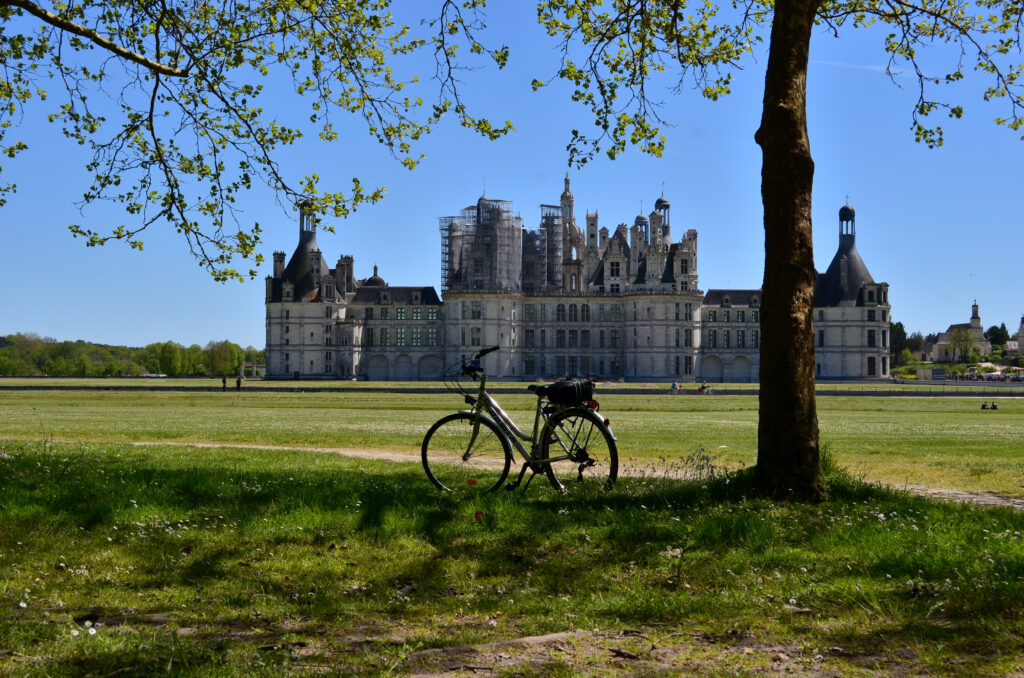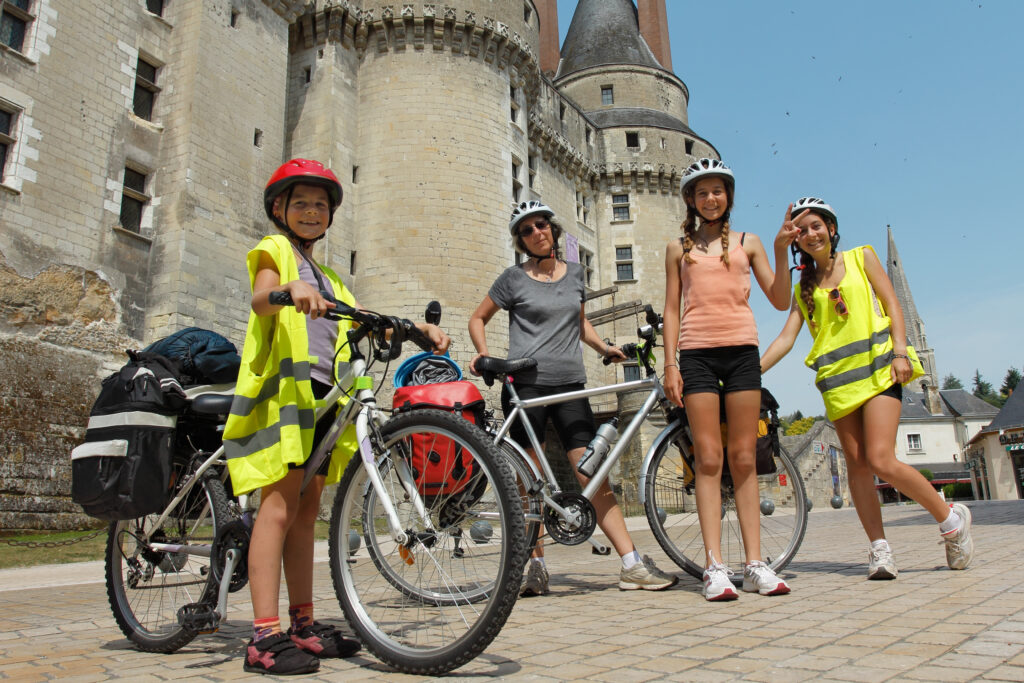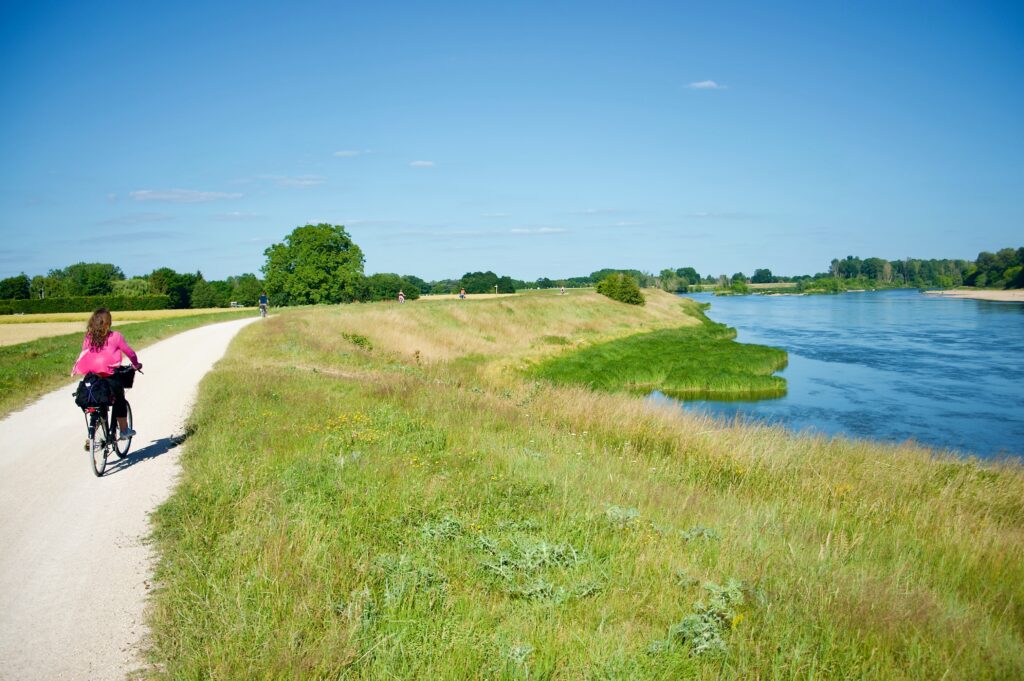
In this article, find out all you need to know about the Loire à vélo: one of France's most beautiful cycle routes. The Loire à vélo is in fact the name given to a wider, even international, itinerary: EuroVelo 6. This trail is part of a European cooperation program aimed at increasing the number of large-scale cycling facilities in Europe. Of all these European cycle paths, EuroVelo 6 is the most advanced, and the French section has been fully completed! In addition to France, EuroVelo 6 passes through Switzerland, Germany, Austria, Slovakia, Hungary, Croatia, Serbia, Bulgaria and Romania.
But let's concentrate here on the French part: and more precisely on the Loire à Vélo, which is the most westerly section of the whole trail. This magnificent trail follows the banks of the Loire, one of the world's most beautiful rivers, between Nevers, in the Loire Valley, and Saint-Brevin-les-Pins, where the Loire flows into the Atlantic. As a form of soft mobility, cycling is one of the best ways to visit this natural region. Along its 900 km, the trail passes through some of France's most beautiful landscapes, including the Loire Valley itself, a UNESCO World Heritage Site.
And there's another piece of information about the Loire à vélo that works in its favor: it's an easy itinerary, accessible to beginners wishing to embark on their first cycling trip ! In fact, the trail has very little gradient, and if you take it from east to west, it's even slightly downhill.
To sum up, here's the most important information about the Loire à vélo:
- Level: easy
- Length: 900 km
- Duration: 8 to 15 days
- Family-friendly: yes
Loire à vélo: route information

To organize your itinerary on the Loire by bike, and know how long it will take you to cover it, you'll need to prepare your different stages. To do this, ask yourself several questions:
- Have I already done a long bike trip?
- What's my skill level?
- What's my average speed? If you don't know your average speed, you can assume 15 km/h.
- Will I be doing the itinerary with my family?
- How long do I want to cycle per day?
- Do I want a leisurely pace with lots of sightseeing, or more of a sporting challenge?
On average, if you pedal 60 to 70 km a day, which leaves plenty of time for breaks and visits to the Loire castles, you can cycle the Loire in 12 to 15 days. More athletic cyclists, however, can do it in 8 days. Count on 20 to 30 km per day with children. The Loire à vélo can be divided into 6 main stages, as detailed below.
From Nevers to Orléans
The section between Nevers and Orléans is 200 km long. It starts in Nevers, with its famous ducal palace, then crosses the Sologne, a forest and wine-growing region in the Cher département, before arriving in Orléans. You can divide this long stage as you wish, according to your level. It's mainly easy, except for a section of medium difficulty in the heart of the Loire vineyards.
Orléans to Blois
Leave Orleans and its Joan of Arc heritage, and follow the river through fascinating wetlands. This 90 km stage between Orléans and Blois is exclusively water-based, and therefore very easy. Cyclists usually complete it in one or two days. However, the level is very high in terms of heritage, since you're in the heart of the Loire castles. The Château de Chambord is only a short distance away, but many cyclists choose to make the detour to see it. When you arrive in Blois, of course, don't miss a visit to the royal chateau.
From Blois to Tours
For your information, on the Loire à vélo, most cyclists choose to do the 70 km section between Blois and Tours in one day. Here again, the route follows the Loire basin exclusively, and is therefore flat. You can, however, extend this leg to visit various Loire castles, such as the Château de Chaumont-sur-Loire or the famous Château d'Amboise. And don't miss the historic center of Tours on your arrival.
Tours to Angers
This 140 km section between Tours and Angers is strictly flat, so it's up to you to decide how to divide it up. The average cyclist completes it in two days, with stops in Saumur. This superb section takes in the vineyards and châteaux of the Loire Valley, including the Château de Villandry, right from the start. Finally, you'll arrive in Anjou, a superb tourist region, where your stage ends in Angers.
Angers to Nantes
thereare 110 km between Angers and Nantes, which some cyclists decide to do in one, two or even three stages. During your stages, be sure to sample the famous Anjou wines, as well as visit the charming town of Ancenis. Ideally situated between Angers and Nantes, Ancenis is a frequent overnight stop. Once in Nantes, pay a visit to the Machines de L'île, the giant automatons that inhabit the city!
From Nantes to Saint-Brevin-les-Pins
This final stage between Nantes and Saint-Brevin-les-Pins takes just 63 km, and many cyclists choose to do it all in one go. Here, the Loire becomes wider, and even more impressive: you visit its estuary, one of the most beautiful parts of the river. At the gateway to Brittany, maritime waters meet freshwater, forming a spectacular natural landscape.
Practical tips on cycling the Loire

Where to sleep, what facilities to use and what not to miss: we've got all the information you need on the Loire à vélo, for a well-prepared zero-carbon trip!
Where to stay along the route?
There's a wide range of accommodation along the route, including hotels, gîtes and campsites. You can sleep in the countryside or in the city.
Look out for accommodation with the Accueil Vélo label. This guarantees that they comply with strict specifications designed to make it easier to welcome cyclists:
- Be located less than 5 km from the itinerary,
- Have bicycle-friendly facilities, such as a bicycle shelter or repair kit,
- Be able to offer a warm and friendly service to cyclists, including information on the practice, the route, the weather or the region,
- Provide services adapted to cyclists, such as transferring luggage from one accommodation to another, laundry or bike washing.
The Accueil vélo label also involves restaurants, tourist attractions, tourist offices and rental companies.
Equipment to pack
Always remember to travel light! On a bike, every kilo counts, and it's sometimes better to have one piece of equipment missing than one too many, with you carrying the load. If it's difficult for you to travel light, then consider using a luggage transport service. Each morning, your belongings will be picked up by a carrier at your accommodation, and delivered before you arrive at your next overnight stop.
For the same reason, avoid backpacks, which unbalance the cyclist. Instead, use a waterproof pannier. Fill it with light, breathable clothing: perspiration can really make you cold after the effort! Don't forget a windproof jacket, water bottles, sun cream and an anti-theft device.
And don't forget a first-aid kit- not too heavy, but at least stocked with antiseptic, bandages and compresses. Your bike will also need its own first-aid kit, containing at least a wrench, patches, grease and an inner tube.
Not-to-be-missed sights along the Loire à vélo
Along the Loire à vélo, you'll pass through some incredible landscapes. Don't miss
- Orléans'Sainte-Croix cathedral, a superb example of Gothic architecture,
- The Hôtel Groslot in Orléans, one of the region's finest private mansions,
- Château de Chambord, the most famous of the Loire castles,
- Château de Chenonceau, well worth a visit for its remarkable collection of tapestries,
- The troglodyte villages of Saumur, with their houses carved out of the tufa rock,
- The Château de Villandry, renowned for its French gardens,
- The Royal Abbey of Fontevraud, one of the largest monastic cities in Europe, well worth a visit,
- Le Clos Lucé in Amboise, where Leonardo da Vinci lived,
- Le Prieuré de la Charité-sur-Loire, a UNESCO World Heritage site,
- Les Machines de l'Île, giant animal-shaped automatons in Nantes.


